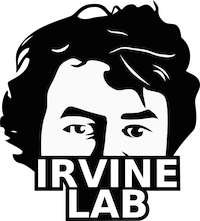4. geometry_extractor¶
Extract geoemtric features – surfaces and lines – from periodic volumetric data.
Note: This module uses pyopencl (via simple_cl) for computations.
4.1. Example Usage¶
#First generate a periodic volume -- in this case a unit cell of a gyroid.
NP = 128
x = np.arange(NP) * 2*np.pi / NP - np.pi
x = x.reshape(1, 1, NP)
y = x.reshape(1, NP, 1)
z = x.reshape(NP, 1, 1)
gyroid = np.sin(x) * np.cos(y) + np.sin(y) * np.cos(z) + np.sin(z) * np.cos(x)
#Generate a mesh as a gyroid isosurface
m = periodic_isosurface(gyroid, level=0)
#Save the mesh as a PLY file
m.save('gyroid.ply') #Use the mesh.save
geometry_extractor can also be used in conjunction with an external
CLSession by specifying the clsession parameter in the relevant function
calls. This may dramatically speed up certain operations by preventing data
copying. Note that any function calls to with a specified clsession will
automatically compile the geometry extractor kernels for that OpenCL context.
4.2. Overview¶
|
Generate an isosurface for periodic volumetric data. |
|
Trace the zero lines in a complex periodic array |
|
Get the interpolated value of periodic volumetric data. |
|
Label non-zero features in a periodic array. |
|
Make a path generated from a periodic volume smooth by moving sections across period boundaries. |
|
Set the parameters of the OpenCL Session used for computations. |
Compile the geometry extractor kernel in an external CLSession. |
4.3. Classes and Functions¶
-
ilpm.geometry_extractor.compile_code_in_external_session(cl)[source]¶ Compile the geometry extractor kernel in an external CLSession.
Allows this session to be used with geometry extractor calls. Usually this function does not need to be called explicitly, but will be handled automatically when a function which requires it is called.
- Parameters
- clilpm.simple_cl.CLSession
-
ilpm.geometry_extractor.set_opencl_params(use_doubles=None, device=None, context=None)[source]¶ Set the parameters of the OpenCL Session used for computations.
See
simple_cldocumentation for details.Note: this function must be called before any functions that use it, or an error will be raised.
- Parameters
- use_doublesbool, optional (default: False)
- devicestring or list, optional (default: ‘cpu’)
- contextpyopencl Context or CLSession object, optional
If specified, causes CLSession to share a context.
-
ilpm.geometry_extractor.periodic_isosurface(arr, level=0, clsession=None)[source]¶ Generate an isosurface for periodic volumetric data.
- Parameters
- arrnumpy or pyopencl array
Array should be real or complex type of the CL session (default:
float32orcomplex64). If array is complex type, the isosurface is taken as the absolute value of the array. (This is useful because it doesn’t make a copy of the array, so it doesn’t use any extra memory.)- levelfloat
The value at which to take the isosurface.
- clsessionilpm.simple_cl.CLSession, optional
If specified, kernel will be run using specified CL session, otherwise a default one is automatically generated. If the required kernels are not found in the clsession, they will be automatically compiled.
- Returns
- meshilpm.mesh.Mesh
A mesh corresponding to the volume. The coordinates correspond to the indices of the input array, and the normals are automatically generated from the volumetric data.
-
ilpm.geometry_extractor.periodic_complex_trace(arr, min_dist=0.25, ignore_length=3, link_angle=1.0471975511965976, clsession=None)[source]¶ Trace the zero lines in a complex periodic array
- Parameters
- arrnumpy or pyopencl array
- min_distfloat, optional (default: 0.25)
The minimum distance between points in the returned Tangle. Used as an input to
ilpm.path.Tangle.eliminate_close_points().- ignore_lengthint, optional (default: 3)
Paths with a length less than or equal to this number of points are silently ignored.
- link_anglefloat, optional (default: pi/3 ~ 60 deg)
The maximum angle between a tangent vector and the radius vector between two points for a valid link. Larger values accomidate more sharply curved paths, but have a higher probability of forming false connections which will result in a failed trace.
- clsessionilpm.simple_cl.CLSession, optional
If specified, kernel will be run using specified CL session, otherwise a default one is automatically generated. If the required kernels are not found in the clsession, they will be automatically compiled.
- Returns
- tangle
ilpm.path.Tangle A tangle of the traced paths. If there are errors in the trace, this will be indicated in the
tangle.info['trace_error']field. In addition to the traced paths, the zero-phase direction will be included in the tangle as thenormalvector for each path.- bad_tracesint
The number of non-closed paths. Should be 0 for a sucessful trace.
- tangle
-
ilpm.geometry_extractor.periodic_path_unwrap(X, period)[source]¶ Make a path generated from a periodic volume smooth by moving sections across period boundaries.
Does not take :class:
ilpm.path.Path’s as input; this function should be called before turning the vector array into a path.After completing the unwrapping, ensures that all points lie on the positive side of the periodic boundary, i.e. if any coordinate is negative in the path it pushes it up one period.
- Parameters
- Xvector (N, 3) array
- period(3) array
- Returns
- Xpvector (N, 3) array
A reconnected version of X. Some points may lie outside the original period, as required for reconnecting the sections.
-
ilpm.geometry_extractor.periodic_label(mask, structure=None)[source]¶ Label non-zero features in a periodic array.
This function is an extension to
scipy.ndimage.measurements.label, which connects regions across periodic boundaries.- Parameters
- mask: array_like
An array to be labeled. All non-zero regions considered features.
- Returns
- labelnumpy array
An integer array where each value represents the (arbitrary) feature number
- num_featuresint
The number of features.
-
ilpm.geometry_extractor.periodic_interpolate(arr, points, clsession=None)[source]¶ Get the interpolated value of periodic volumetric data.
- Parameters
- arrvolumetric array
Should be real of complex type.
- pointsvector array [shape: (…, 3)]
Coordinates of points to map. (Note: “C” indexing assumed, thus point (1, 2, 3) maps to arr[3, 2, 1].)
- clsessionilpm.simple_cl.CLSession, optional
If specified, kernel will be run using specified CL session, otherwise a default one is automatically generated. If the required kernels are not found in the clsession, they will be automatically compiled.
- Returns
- valuearray [shape: (…)]
